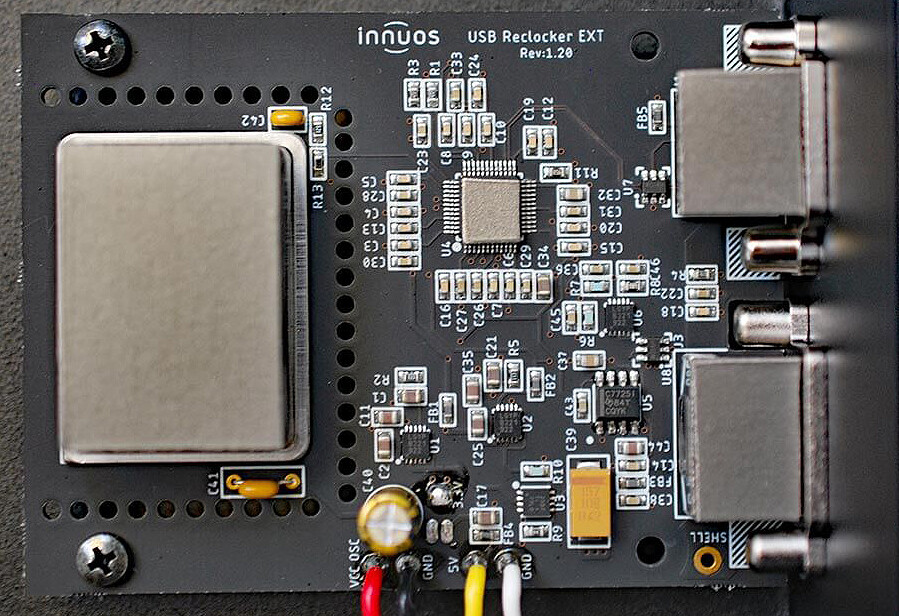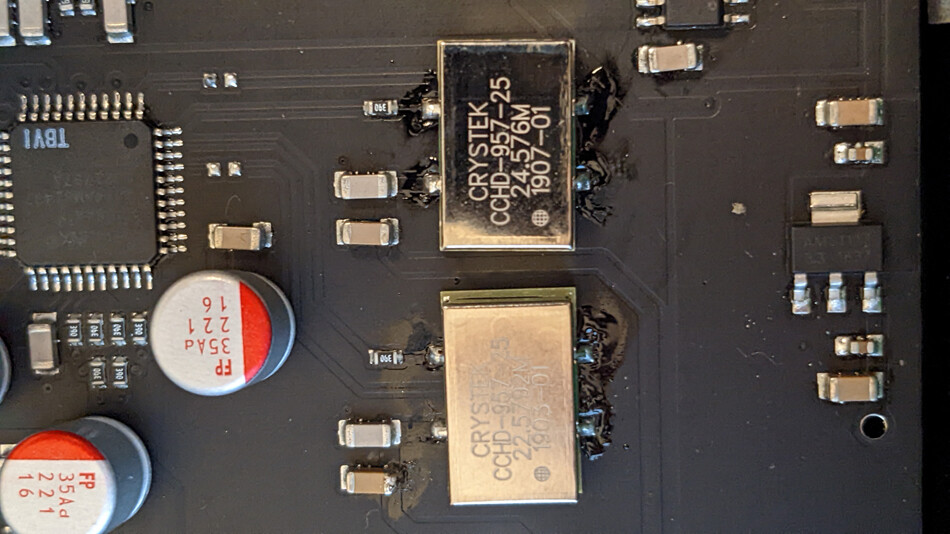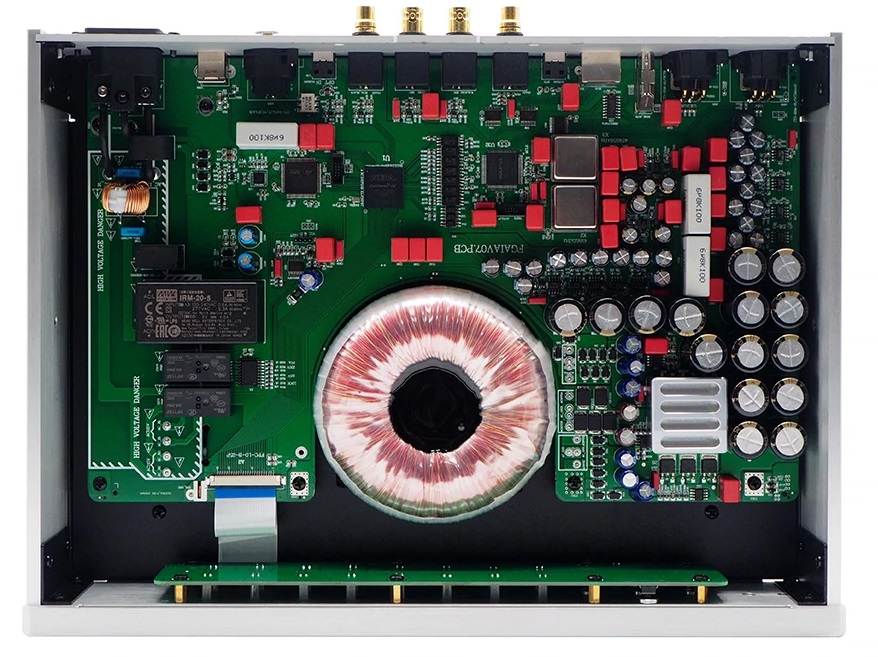When I considered what topic to write about for my first contribution to the community, I made a mental retracing of my audio journey over the last handful of years. In 2019 I’d already started to get myself back into audio after a long absence from the hobby. I found myself looking to consolidate my haphazard .mp3 collection, upgrading many files that were still 128kbps from the Napster days and started ripping CDs that I hadn’t listened to in years. When Covid-19 hit, finding myself with lots of time on my hands, I decided that what had originally started out as a consolidation effort turned into a full-blown project to compile and rip every CD I had ever purchased, organize them into a library and fill in every possible metadata detail I could.

Of course, what was the point of all that music, if I didn’t start listening to it in the best way I could. So along with the digital library, I started to delve into the world of computer audio in the worst way possible, assuming I knew enough to not need any research, that all I needed was a great sound card and that plugging my headphone into the headphone out jack of that sound card was all I needed to do.
It’s been a few years and many purchases later, but the hobby is alive and well and I can now laugh about where I started, because in many ways, starting from such a poor source for my digital music listening, allowed to me see the most out of each improvement. My first headphone amp (O2) showed me that plugging a headphone to PC sound card left a lot to be desired. My first external DAC (Enog 2) showed me how much detail a quality DAC added to an .mp3 file. Then adding a good power supply to that same DAC, let me see for the first time a “black” background. My first “high end” headphone, a used $650 LCD-2 showed me bass extension and improved dynamics. All very revelatory in their own right, all things that made me realize how much audio could improve with some thought, some research and some “try it and see what happens” attitude! It’s a hobby after all.
Part of retracing my audio journey got me thinking about things that I’d bought that made me say “WOW” after listening to them. Not because they were expensive, or the best, far from it. In many cases, the wow came from seeing a marked improvement in quality while listening to the music I loved. Going through the mental journey I kept coming back to what turned out to be the biggest revelation in the hobby and for me that component was a DDC. A digital-to-digital converter, something which was not really an audio component per se, but another black box that would take those carefully compiled digital files I spent so long gathering, which allowed me to see how much detail actually exists in a well recorded Redbook 16/44 CD.
I’ve taken a circuitous road and now finally get to the topic; it took a lot for the realization to register during my pursuit of better audio!” (This is the important part, so pay attention 😊) Digital music is all about time, as accurately as possible, assuring that digital stream coming out of a computer, into precise time alignment that matches the original source down to a femto-second. That’s 10 to the factor of 15 of a second! It sounds crazy but our ears are extremely sensitive to how things sound, and the closer a digital signal is to the source from a time standpoint, the more natural, cleaner, crisper, sharper, (or whatever other adjective you want) things sound. The effect a DDC can have on your music is like looking at your computer monitor, realizing that you haven’t cleaned it in months, and wiping off the layer of dust, schmutz, spittle and whatever else got on there. Taking time to cleaning it with a good glass cleaner and a micro fiber, then looking at your monitor again… it’s that kind of “WOW”. It’s the same image just BETTER, not “smeared” and it’s that same smearing effect that happens when a digital signal suffers from jitter. It’s not about improving resolution, like going from an HD to a UHD video image on a TV, that’s different. When I introduced the L.K.S DDC in to my humble chain at the time, it was a watershed moment, the realization that a component could bring that much improvement to something I was already kind of happy with. It took that $200 DAC and made me feel that I had upgraded it to a higher tier DAC. Better detail, an additional improvement in background and realism. It didn’t change the sound signature, just brought the most out in what was already there. The “WOW” moment, thinking how can it get better than this? The benefit is about getting the most of what you’ve got, today, right now, even if you’re just starting out in the hobby, integrating a DDC into your digital chain will start paying dividends early in your audio journey.
Computers are generally very noisy environments, high speed memory and even higher speed processors, that generate a lot of noise, often with a very large switched power supply inside (if it’s a desktop) designed to generate a lot efficient wattage, all in close proximity inside a metal box, attached to an LCD screen (if it’s a laptop) that is a notoriously noisy component. A digital signal is lucky to get out of there unscathed, let alone accurate enough to deliver time aligned information down to the femto second. It’s just not going to happen. Couple that with noisy USB power if you use a USB cable as your digital signal out of a computer. Or an optical signal which has the added job of turning electrical impulses to optical ones which takes time and potentially adds jitter.
At the time I purchased a DDC to see what they were all about, I had the Geshelli Labs Enog 2 Pro and a Cambridge Audio DacmagicPlus. Not beginner gear but certainly nothing that differentiated itself from the countless other $200 to $300 dollars DACs out there. I bought equipment for the features, the connectivity, the convenience but the sound was indeed still tethered to the “all DACs sound alike” philosophy having never experienced anything beyond them yet.

I wound up getting a used L.K.S Audio USB-100 found on eBay for around $130 bucks. It was worth a try being half the retail price and having decent reviews given its Chi-fi price point. It was a revelatory experience, pun and all. Running out of analogies here, but again, like driving a car after cleaning the windshield inside and out. Everything just sounded better, finding out that your little $200 dollar DAC had never sounded so good.
So why/how does a DDC work you ask? I’ve already said, it’s all about time, and the fact that the computers we use to play our digital music are more often than not, the worst possible source we can used to play music and riddled with noise. Getting rid of that noise, using a good quality linear power supply to power your components where possible, following best practice cable management, that kind information isn’t readily available, to a fledgling audiophile. It’s not sexy like a new powerful amp, or a high-end DAC with the latest technology, it’s not a giant killer new headphone or a masterfully crafted speaker, so reviewers don’t spend a lot of time telling you why they’re important let alone spend time actually reviewing them. DDCs are generally plain boxes with not much going on to them, a display if you’re lucky, a couple of indicator LEDs more likely is all the bling they’ll sport. What they do is take a poor quality and noisy signal from your computer on the USB input, work their clean up magic and send the signal back out to your DAC on another output.
It’s clear a DDC can make a difference given what I just described, it’s unfortunate many folks in the hobby never really explore their potential. However, look inside many high-end DACs and one of the first things you notice is a VERY robust digital clock. They’re that way for a reason. What I’m impressing upon here is that as a beginner in the hobby, you’ll be well served introducing a DDC into your system sooner rather than later since entry to mid-level DACs likely benefit most from a clean input signal. Those DACs are precisely the ones that don’t incorporate high-quality clocks in their implementation, not something that can be profitably implemented in the segment.
Like everything else in the hobby, DDCs or signal re-clockers as they’re sometimes referred to, come in many price points, with a variety of inputs, outputs and features. One thing to add, just like clean power is important to getting the best sound from a DAC, it’s also of utmost importance to the performance of a DDC. When purchasing a power supply, perhaps look for one with enough amperage to feed both a DAC and a DDC if they’re the same voltage, so there are ways to limit the spend if you’re smart about what you purchase.
The options are plentiful, Wyred 4 Sound Recovery USB Reclocker sells for $149, a Singxer SU-2 retails for $429. A new very promising option from Gustard is their U18 which also includes a 10 Mhz clock generator sells for $499. In the high end, a Denafrips Gaia is $1800 and is said to be well worth the expense. You’ll find they can provide benefits over a wide price spectrum. Some manufacturers even create specific pairings to make the digital signal they deliver as best as it can possibly be. SOtM for example sells the TX-USBultra reclocker that’s designed to be specifically paired with their SMS-200 Ultra Neo streamer and matched sPS-500 power supply. I found here that each component stood on its own but as a trio they build synergy and provided an impressive three box streaming solution.

As a finishing thought, a DDC may not always be the best investment in higher level the gear. If your source audio is not starting in a noisy PC, (using a Raspberry Pi with a quality hat like the Pi2AES and power supply) or you’ve purchased a good quality streamer such as an Auralic or Lumin as your digital source there may be a diminishing or perhaps detrimental effect when introducing a lower tier DDC as part of that chain as they work hard to provide a low noise and low jitter output in the first place; In the stratosphere level of DACs where manufacturers take great pains to implement very high quality temperature controlled or nitrogen filled clocks, they may not even required. Vendors will often have specifically designed or matched DDC for their TOTL DACs. Like everything else in the hobby, try things out for yourself, look to leverage synergy where possible and just enjoy the discovery process… and if you don’t have one already, I’m sure after reading this you’ll put a DDC on your wish list 🙂
Besides music, I follow F1, dabble in photography, birdwatch, cook good food and eat good food. Currently my desktop daily use HP is a ZMF Verite Closed. The amp is a Bryston BHA-1, fed from a Mojo Mystique V2 SE with a DDC and an external SOtM USB.
My 2 Channel system (where I do most of my listening) Consists of an a Weiss 502 DAC/Streamer feeding an LTA Ultralinear Integrated Amp. The speakers are custom finished Omega Junior Alnico XRS tower and an Omega Deep Hemp 8 Sub both with some modifications to their base/feet.